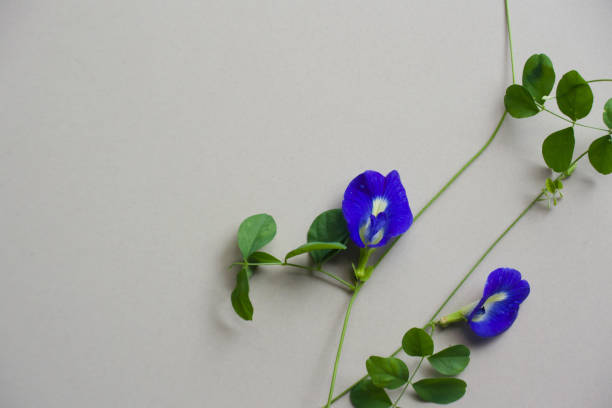Today, I’d like to talk to you about “Blue Tea Vs Green Tea”. Tea fans across the globe are uncovering an exciting discussion developing in their teacups: the lively attraction of blue tea versus the long-established green tea. These teas, each with its distinct taste profile and health advantages, have roots steeped in rich cultural customs and are becoming essential to present-day healthy lifestyles.
Blue tea, also called butterfly pea flower tea, originated in Southeast Asia. This captivating tea is created from the petals of the Clitoria Ternatea plant, famous for its stunning azure hue. Its vibrant color changes to various shades when combined with acidic components like lemon or lime, creating a visual feast. Besides its appealing appearance, blue tea is valued for its antioxidant properties, contributing to improved skin health, cognitive function, and overall well-being.
In comparison, green tea boasts a long history that dates back thousands of years to ancient China and Japan. Green tea is highly regarded in these cultures for its medicinal characteristics and role in ceremonial practices; it is produced from the leaves of the Camellia sinensis plant. The minimal oxidation process preserves its vibrant green color and high concentration of catechins, which are potent antioxidants. Green tea is widely esteemed for its capacity to enhance metabolism, cognitive function, and reduce the risk of chronic illnesses.
As health-conscious consumers search for natural and beneficial alternatives to sugary drinks, the popularity of blue and green tea has risen. Present-day tea drinkers seek refreshment, health benefits, and cultural richness that these teas provide. The popularity of these teas has increased thanks to the global wellness trend, leading many to integrate them into their everyday schedules as a component of a comprehensive approach to health.
Blue tea has historically been utilized in traditional Ayurvedic medicine for its healing properties. Its calming qualities are thought to relieve stress and promote relaxation. Meanwhile, green tea’s historical importance is deeply rooted in the rituals of Japanese tea ceremonies, symbolizing purity and mindfulness.
This article explores the intriguing world of blue and green tea, comparing their origins, advantages, and cultural importance. By understanding the unique characteristics of each, readers can make well-informed choices that coincide with their personal health objectives and preferences. Whether you are fascinated by the vibrant allure of blue tea or the timeless appeal of green tea, this exploration enhances your admiration for these extraordinary beverages. Thus, ignite your curiosity and join us in this aromatic discussion, where tradition meets innovation in every cup.
Steeping in Antioxidants: The Health Benefits Comparison

The realm of tea presents numerous options, each filled with distinct flavors and health advantages. Blue and green tea have an exciting reputation and are renowned for their high antioxidants. Antioxidants are critical in shielding our bodies from oxidative stress and the harm of free radicals, supporting our overall well-being and extending our longevity.
Blue tea, produced from the butterfly pea flower (Clitoria Ternatea), possesses antioxidants. This vibrant blue infusion is especially abundant in anthocyanins, the compounds responsible for its striking color. Anthocyanins are known for their anti-inflammatory properties, which may reduce the likelihood of developing chronic conditions such as heart disease and cancer. They also support brain health by enhancing cognitive function and memory. Additionally, blue tea contains proanthocyanidin, another powerful antioxidant that promotes skin health by stimulating collagen production and defending against premature aging.
On the other hand, green tea is famous for its high level of catechins, an antioxidant that effectively combats free radicals. The predominant catechin in green tea is epigallocatechin gallate (EGCG), the subject of extensive research due to its health benefits. EGCG is associated with a decreased risk of cardiovascular diseases, improved brain function, and weight management through increased metabolism. Green tea also contains other beneficial compounds, such as quercetin and theanine, which work together with catechins to enhance its health-promoting effects.
The antioxidants in blue and green tea are vital in maintaining overall health. By neutralizing free radicals, these substances help shield cells from damage, reduce inflammation, and bolster the immune system. Drinking these teas often can enhance skin conditions, improve cognitive abilities, and lower the chances of developing long-term diseases. They also contribute to the body’s detoxification processes, promoting well-being and vitality.
Comparative research studies have shown promising findings regarding the health benefits of both blue and green tea. Research into blue tea suggests that its antioxidant characteristics can effectively reduce oxidative stress and inflammation, providing a natural solution for various health issues. At the same time, thorough investigation into green tea consistently shows its capacity to lower the chances of heart disease, improve cognitive function, and aid in weight management.
In summary, blue and green tea have diverse health advantages primarily because of their abundant antioxidants. Whether you savor the lively, flowery flavors of blue tea or green tea’s natural, refreshing taste, incorporating these antioxidant-packed drinks into your daily regimen can significantly enhance your overall well-being. By delving into the distinct qualities of each tea, you can make knowledgeable decisions that align with your health goals and enjoy the numerous benefits they offer. So, immerse yourself in the goodness of blue tea and green tea, and relish the healthful journey they provide.
Cultivating Taste and Aromas: The Sensory Experience

Tea provides more than just a drink; it’s an experience that engages the senses, from sight to taste and smell. Blue and green tea stand out for their distinct colors, flavors, and aromas, offering unique experiences for tea lovers.
Blue tea, derived from butterfly pea flowers, is a captivating sight. Once brewed, the petals create a vivid blue color that can turn into a beautiful purple with a squeeze of lemon or lime. This visual appeal sets the stage for a sensory journey. The taste of blue tea is often described as earthy and woody, with subtle floral hints that linger on the palate. The fragrance is equally enchanting, emanating a delicate scent that suggests its floral origins, encouraging drinkers to revel in its soothing qualities.
In contrast, green tea presents a different sensory experience. Noted for its fresh and grassy flavor, green tea offers a variety of taste complexities, ranging from sweet and vegetal to slightly astringent. The aroma of green tea is equally diverse, often carrying hints of freshly cut grass, seaweed, or floral notes, depending on the specific variety and region of origin. This intricate interplay of flavors and fragrances makes green tea a favorite among enthusiasts, providing a refreshing and invigorating experience.
The sensory aspects of tea play a significant role in individual preferences. Blue tea’s striking visual appeal can instantly appeal to those who value the aesthetic element of their drinks. In contrast, green tea’s multifaceted flavors and aromas can attract those who seek a more traditional and nuanced taste experience. A ritual is established in brewing and enjoying tea, creating an immersive moment that engages all senses and heightens overall enjoyment.
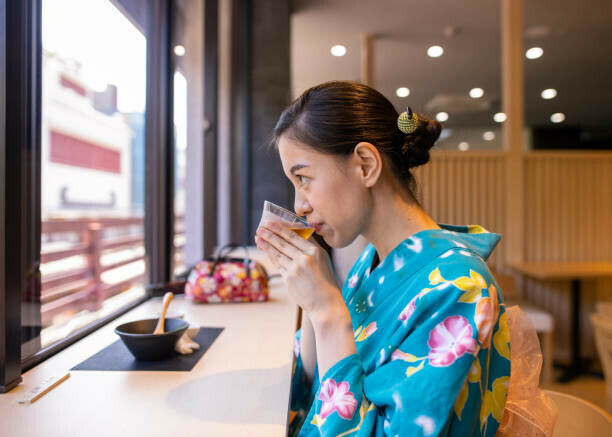
Brewing methods play a crucial role in shaping the flavor and aroma of both blue tea and green tea. For blue tea, steeping the petals at a lower temperature helps preserve its delicate flavors and vibrant color. The addition of acidity can further enhance its visual appeal and introduce new flavor dimensions. On the other hand, green tea demands careful attention to water temperature and steeping time. The use of excessively hot water can lead to a bitter taste, whereas the right temperature can bring out its sweet and grassy notes, resulting in a balanced and enjoyable cup.
In summary, the sensory experience of blue and green tea offers a delightful exploration of color, flavor, and aroma. Whether attracted to the remarkable appearance and earthy notes of blue tea or green tea’s refreshing and complex profile, each cup offers a unique sensory journey.
Through comprehension and exploration of brewing methods, individuals can unleash the complete capabilities of these extraordinary teas and partake in a sensory journey that enhances the overall tea experience. Therefore, embrace the sensory delight of blue and green tea and let your senses guide you through a captivating world of taste and aroma.
The Brewing Rituals: Preparation and Consumption
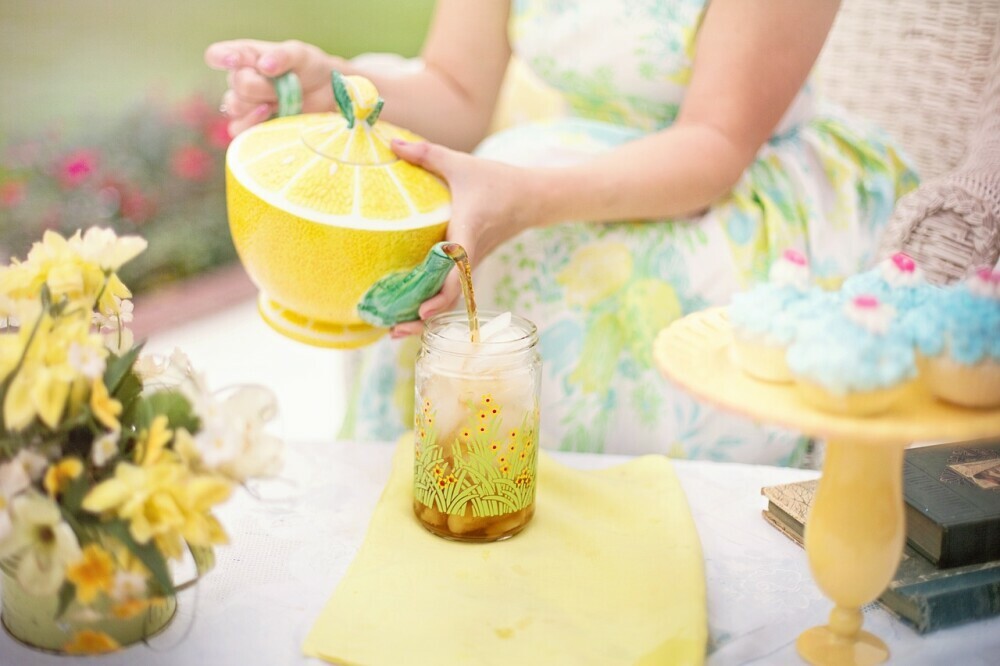
The art of preparing tea is a ceremonial practice that melds tradition and personal taste, providing a distinctive experience with each cup. Blue and green tea offer unique journeys from preparation to consumption, with each type holding its own subtleties and methods to reveal its full potential.
Making blue tea is a simple yet enchanting process. Start by gathering a handful of butterfly pea flowers. You’ll need approximately a teaspoon of dried flowers for every cup of tea. Boil water and cool slightly to around 200°F (93°C). Pour the hot water over the flowers in a teapot or cup and watch as the vivid blue color infuses the water. Steep for 5 to 7 minutes, adapting the time to suit your preference for a more robust or milder flavor. After the infusion, pour the tea into a cup through a strainer. Squeeze in a small amount of lemon or lime juice for an additional twist and witness the enchanting transformation to a purple hue. Enhancing the visual attractiveness and providing a zesty punch to the earthy and floral flavors of the tea.
Preparing the perfect cup of green tea requires careful attention but is equally satisfying. Start with fresh, high-quality green tea leaves. Remember to use about one teaspoon of leaves per cup. To make a good cup of tea without making it bitter, heat the water to about 175°F (80°C) instead of boiling it. Next, pour the hot water over the tea leaves in a teapot or infuser and let it steep for 2 to 3 minutes. This brief steeping period retains the sweet, grassy flavors and prevents the release of excessive tannins, which can result in astringency. Once the tea has steeped, discard the leaves and pour the tea into a cup. Enjoy the fresh, invigorating aroma and the complex, vegetal taste that green tea is known for.
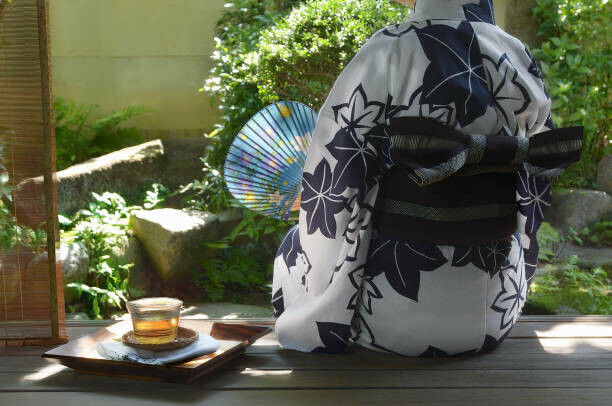
The methods of tea consumption vary greatly, from traditional ceremonies to modern, casual practices. For example, traditional Japanese tea ceremonies emphasize the mindful preparation and consumption of matcha, a powdered green tea. These ceremonies are steeped in history and are as much about the meditative process as the tea. In contrast, modern methods often prioritize convenience and speed, with many people using tea bags or infusers for a quick brew.
Temperature and steeping time are critical in tea preparation, impacting the flavor, aroma, and overall experience. Ensuring the correct temperature for both blue and green teas preserves the delicate compounds and allows them to be fully extracted, resulting in a balanced and flavorful cup. Steeping time is equally important; a short one can yield weak, depthless tea, while too long can lead to overpowering or bitter flavors.
In conclusion, brewing blue and green tea rituals offer an intriguing blend of tradition and modernity, with each step enhancing the sensory experience. Understanding and honoring the nuances of temperature and steeping time allows tea enthusiasts to savor the full array of flavors and aromas these remarkable teas offer. Whether partaking in a centuries-old ceremony or enjoying a quick cup in the morning, the journey from preparation to consumption is an enjoyable exploration of taste and tradition. So, embrace the ritual, experiment with your technique, and let each cup of blue or green tea be a moment of pure enjoyment and discovery.
Steeped in Sustainability: Environmental Impact and Ethical Considerations

As consumers who love tea become more aware of the environment, there is a stronger focus on making tea production sustainable and ethical. Blue tea, which comes from the butterfly pea flower, and green tea, made from Camellia sinensis leaves, provide exciting insights into the environmental and ethical practices shaping the tea industry.
Blue tea is mainly produced in Southeast Asia, where small farms use organic farming methods to grow butterfly pea flowers. These farms prioritize biodiversity by growing other plants alongside the flowers to improve the soil and reduce pests without artificial pesticides. The flowers are usually hand-picked to minimize the use of machines and lessen the carbon footprint. Water conservation is ensured by using sustainable irrigation methods like drip irrigation. These practices not only make blue tea environmentally friendly but also help support local ecosystems.
Traditionally cultivated in China and Japan, green tea has adapted to meet modern sustainability standards. Many traditional tea gardens now use terraced fields to prevent soil erosion and effectively use the land. Few green tea manufacturers have begun employing organic farming methods, steering clear of the use of detrimental chemicals and fertilizers. Some agricultural operations also integrate sustainable energy sources, such as solar energy, to minimize their ecological footprint. These initiatives play a role in establishing a more environmentally friendly green tea sector that aligns with international environmental goals.
Ethical considerations in tea farming go beyond environmental practices and include fair trade and worker conditions. Fairtrade certifications ensure that tea farmers are paid fair wages and work in safe conditions. This certification also promotes community development and investment in tea-growing regions’ education, healthcare, and infrastructure. Both for blue tea and green tea, fair trade practices help protect the rights and well-being of workers, supporting a more ethical supply chain.
Consumers have a significant role in promoting sustainable and ethical tea production. By selecting organic and fair trade-certified teas, consumers can be assured of environmentally responsible farming practices and fair labor conditions. Being aware of the origins and production methods of tea can guide consumers in making informed decisions. Supporting brands that prioritize sustainability and ethical practices encourages the industry to maintain higher standards.
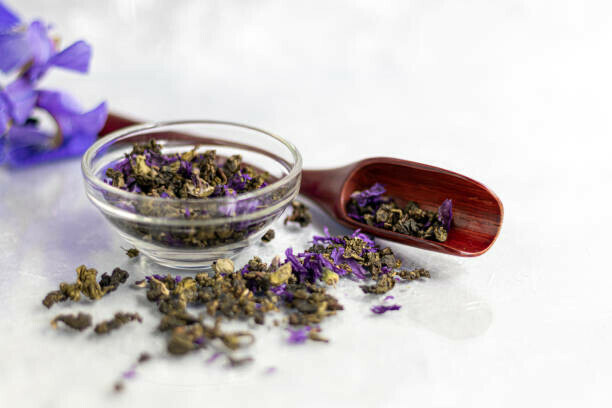
Individuals can choose loose-leaf tea over tea bags to reduce their environmental footprint, as the latter frequently contain microplastics. Tea drinkers can also promote sustainability by using reusable tea infusers and composting used tea leaves. By incorporating these practices into their tea routines, consumers can enjoy their favorite beverages while reducing their ecological footprint.
In conclusion, blue tea and green tea production offer valuable lessons in sustainability and ethical considerations. By practicing organic farming, fair trade practices, and making conscious consumer choices, the tea industry can continue to thrive while respecting both the environment and the people involved in its production. By integrating sustainability into their tea habits, consumers can relish each cup with the knowledge that they contribute to a more ethical and environmentally friendly world.
Thank you for reading my article about “Blue Tea Vs Green Tea”, and I would love to receive your comments down below, in case of any.

